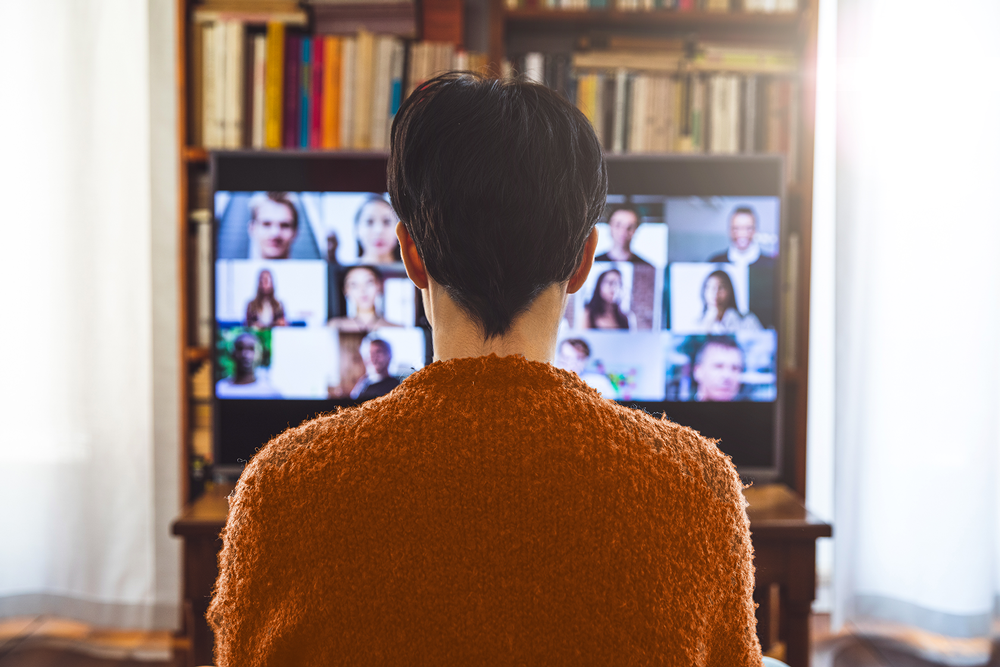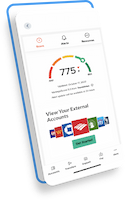So often in life, when a framework is established, we don’t ever challenge it, whether it’s on a personal or business level, or even how a country operates. But then, sometimes things happen in life that force you to examine your understanding of how and why things exist and function, and we’re given an opportunity to reframe how we understand something. COVID has been one for all of us. Recently, we sat down with our CIO, Patrick Sells and Vice President of Specialty Banking, Casey Christopher to talk about the impact that remote working during COVID has had on how they foster new relationships and sustain existing ones.
Patrick: I’ve found COVID to be exponential for my network and relationships for two reasons. First, my ability to access a much larger network has never been easier. Sure, Zoom was available, but it wasn’t a habit. Since March, we’ve been able to hire 20 people out of state. We wouldn’t have done that before. It’s the same with connecting with long-distance friends and establishing those relationships.
Second, there’s more ability to have more meaningful and in-depth group conversations. I was on a happy hour call with seven people from around the country two weeks ago, and the comparison dawned on me: Had we all gone to a bar together, I would’ve heard from maybe 2 or 3 people out of the group because of noise and the nature of tables. But when you’re on a Zoom call, you have to take turns. You get to hear everyone’s opinion. So in a group setting, it has fostered truer and deeper conversations. Not to mention it’s easy to talk to someone somewhere else in the country that has different experiences.
Casey: On top of what Patrick said, I think the thing that’s fueling these deeper connections is that there’s also a level of vulnerability that’s exposed, now. Because we’re all going through a very similar experience, there’s a level of being ok with that vulnerability, too. Whenever Patrick gives a talk or speaks on a panel, I make sure to point out a vulnerable moment. Right now, people are looking for that connection with leaders.
For me personally, the first thing I noticed when COVID hit was how much more time I had on my hands now that my daily commute is out of the picture. There’s time to reflect and concentrate, and more time to collaborate with industry people (and I don’t just mean partners). I’ve had folks reach out to me on LinkedIn, interested in running ideas or getting to know each other as a means of networking. Because I have the time now, I’ve had a great opportunity to meet new people. If we’re mindful of saying “Yes,” and reaching out and collaborating with folks, we can really use this downtime to the best of our ability and come out of this with a lot more meaningful connections, even if it is digitally.
This is the example that woke me up to this new reality: In the last blog post I wrote, I mentioned the VR room we have in our New York City office. Soon after that was published, I had someone reach out to me on LinkedIn who said, “I have a AR/VR company being used in the hospital system, and just saw you mention VR. Can you do a call?” Real far stretch from banking, right? But I said “Yes,” and ended up knowing someone that wanted to invest in their company. She was able to raise capital because of that. But I had that personal connection so I was able to do it. COVID is changing the nature of networking; it’s blasting the doors down.
Patrick: Exactly. It’s reframing how we think about networking. I learned this idea of reframing my perspective early on. In the 7th grade, when I moved to a small town in Missouri, the cool thing for middle school boys to do was to shave your arms to make them look bigger. So I started shaving my arms because I wanted to fit into that town’s framework. When I moved from Missouri to a small town in Indiana, I showed up with shaved arms… And it was the opposite of cool. I’ve never forgotten that experience because it taught me the importance of stepping back and challenging the framework through which you look at something.
So when we think about this idea of reframing our perspective, how does that change our partnerships? Historically, the way we’ve looked at relationships is centered around geographic proximity, and, although there’s a shallowness to it, so many relationships form over alcohol. As fun as it is, as much as it can help lubricate the relationship, we all know it dumbs down the conversation. But that was the old framework through which we looked at things.
Now, we see we can build and start relationships in a personal way that doesn’t require alcohol, but it’s more intimate because we’re all going through this period of mass anxiety. You have to take turns and listen, and geographic proximity doesn’t matter.
So at a partnership level, if you’re focused on purely geographic proximity, there are only so many people you’ll find that fit in with your company culture. Take this for example: We had been working with a law firm located in New York City. Our partnership mostly revolved around entertaining—taking us to dinner or going to drinks. But they weren’t the best partner for us. By contrast, now, because we’ve opened up opportunities to partners throughout the whole country, the numerator gets so much bigger. We found a law firm located in Texas that is phenomenal for us, but they have never entertained us. And that’s ok. I don’t need a steak dinner; I need a partnership that’s right for Quontic. That change just wouldn’t have happened under the old framework.
Casey: It’s true. And I’m thinking about how our frameworks are changing on an individual level, too. Early in quarantine, I read something that said, “Be generous with your assumptions.” And I’ve used that phrase to reframe my thinking towards those I come into contact with, especially when it comes to networking. I don’t think there is a human being I can’t learn something from. You might think someone might not be a good use of your time, but that may not be true.
Casey: Totally! The changing of our body language is very interesting when you’re on a Zoom call. Especially as a woman in banking, I’ve noticed a difference between sitting around a board table, where there is the potential to have someone’s back turned to you, versus on a Zoom call, where everyone is facing each other. It’s more inclusive.
Patrick: I can appreciate that. I also appreciate this humility that’s been birthed. Like, I used to need to be wearing the nicest suit when I’m working. I don’t feel that anymore because being judged on your looks at work has gone away. It’s created the ability to build an emotional and mental connection rather than a physical one. So when you’re going into a video call trying to make these connections, it’s easy to ask things like: What’s it like where you are? How are things going for you? And that’s where you find the common ground. Another strategy is to have something in your background that means something to you, and use it as a tool for conversation. On the flip side, ask about things in their frame.
Casey: When you remove the shallow or physical part of connection, it becomes a lot more about intellectual chemistry—what we’re thinking, saying, and doing versus the physical. It’s the perfect environment to be bold. To reach out. To find out email addresses. Whoever you need to talk to is on LinkedIn, and they have time to take your call, to hear your goals.
Patrick: There are so many social norms that we’ve just dropped off a cliff, at this point, and you can take advantage of that. Now, we can look at things with complete clarity without the insular variables. There was pressure put on a system, and the box was closing in. We needed a bigger box, and we’ve found a bigger box than I ever could have imagined. You don’t have to buckle down and bear it. You can choose greater freedom by allowing yourself a different box.
And this doesn’t have to be some intangible call to action. There is a digital engineer superstar from Louisville, KY, who reached out to connect after reading a blog post. We said, “Let’s just jump on a Zoom call,” and were able to quickly establish a relationship without waiting for it to happen in person. Fast forward six weeks later, she’s joined the Quontic team. You can do the same thing. Let’s set up a happy hour chat and connect.





